Fight Food Waste With Booze
Get zero waste(d) on cocktails using kitchen scraps, and other hacks
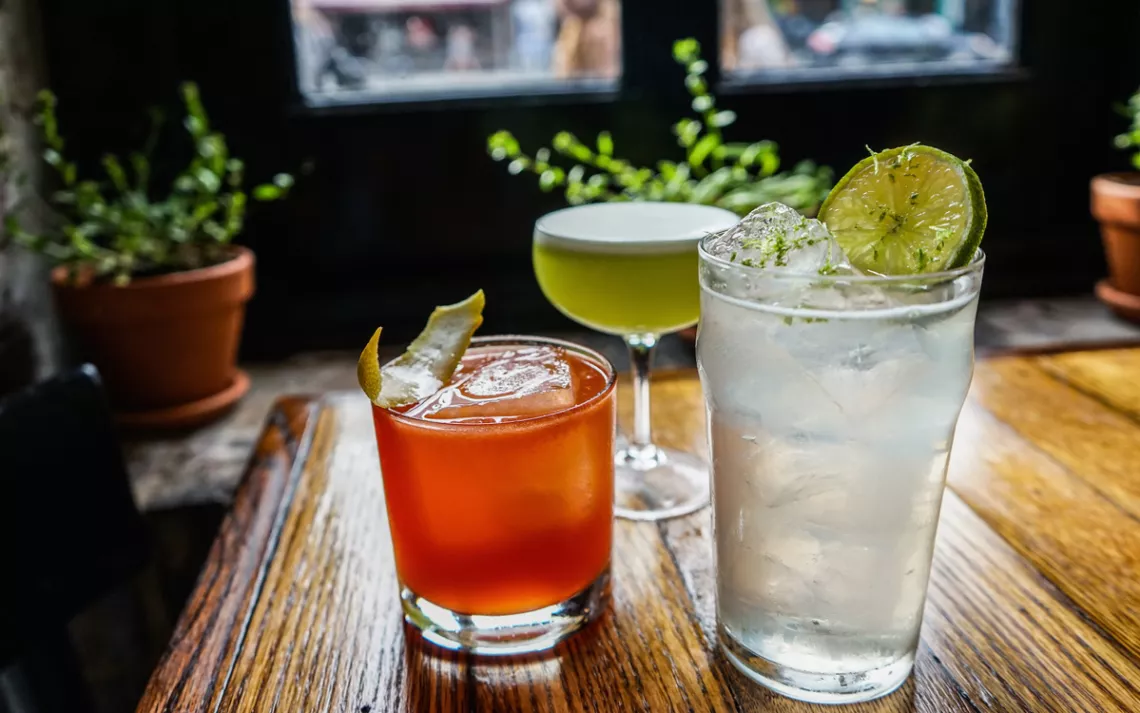
Photos courtesy of Jenny Adams
With President Donald Trump opening up national parks to developers and Puerto Rico still struggling for electricity, it can be tempting to turn the news off altogether and simply gaze into a whiskey glass.
Luckily, we’ve found a feel-good story at the bottom of a drink—the anti-food-waste movement has extended beyond food service and is being embraced by mixologists and cocktail lovers.
Because cocktails typically only make use of bits of produce, the bar industry has long been a food-waste culprit. Nowadays, however, bartenders are increasingly laboring to give former scraps second- and even third-life use in drinks. And we’re not just talking about using an unclaimed orange peel as a garnish or slipping a spent cinnamon stick into a Sazerac. Rather, eco-conscious mixologists are developing more reciprocal relationships with kitchens—for instance, by bequeathing to pastry chefs egg yolks left over from whiskey sours and butter skimmed off drink infusions.
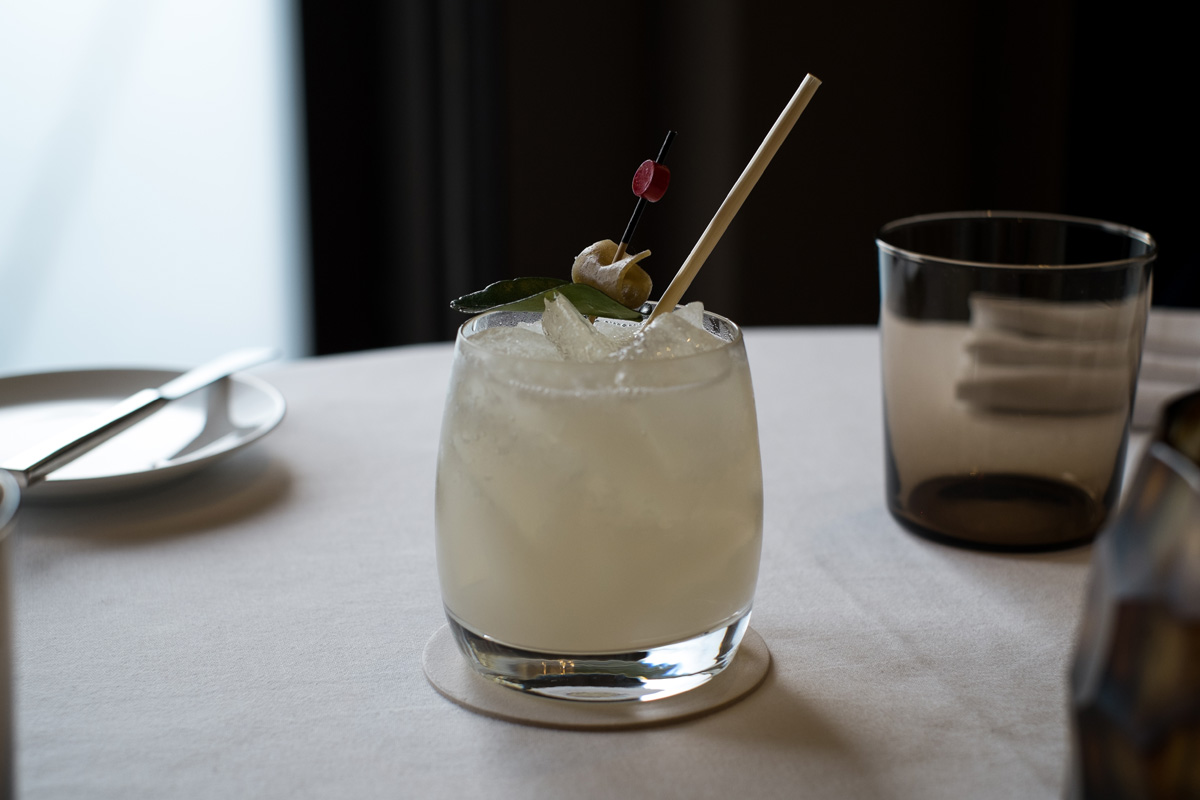 The trend is creating a new language around cocktail preparation—and presentation. Take bar manager Kim Stodel’s Muay Thai cocktail, a popular menu item at Providence, a fine-dining restaurant in Los Angeles. From kitchen leftovers, Stodel collects spent lime rinds, the inedible parts of lemongrass stalks, and ginger peel. He places them in a cryo bag with white rum, creating an intense infusion. Then, Stodel takes those solids back out and dehydrates them, so as to create a colorful, edible fruit leather to decorate the drink (thus reducing the need to create a fresh garnish). What would have been tossed in the kitchen trash has now not only infused a rum, but has also become an innovative garnish and talking point for guests.
The trend is creating a new language around cocktail preparation—and presentation. Take bar manager Kim Stodel’s Muay Thai cocktail, a popular menu item at Providence, a fine-dining restaurant in Los Angeles. From kitchen leftovers, Stodel collects spent lime rinds, the inedible parts of lemongrass stalks, and ginger peel. He places them in a cryo bag with white rum, creating an intense infusion. Then, Stodel takes those solids back out and dehydrates them, so as to create a colorful, edible fruit leather to decorate the drink (thus reducing the need to create a fresh garnish). What would have been tossed in the kitchen trash has now not only infused a rum, but has also become an innovative garnish and talking point for guests.
“Chefs and cooks are trained to try and utilize every single item. Bartenders, not so much,” Stodel says. “But, we are hoping to change that.” Hence, a new section of Providence’s menu that’s entirely devoted to drinks that make creative new use of former food waste. Customers, Stodel says, are into it, and frequently, he and his staff find themselves deep into conversations about food waste with guests.
We know—it’s unlikely you have a cryo bag at home. We did, however, get top-notch bartenders from across the country to share with us five recipes for at-home cocktails that’ll give kitchen scraps a second life in the form of tasty and sophisticated sips.
Cheers to turning trash-bound scraps into tipples!
The Parsnip Flip
Courtesy of Providence’s Stodel
“If you're cooking with parsnips, you’ll have to peel them,” says Stodel. “Here’s a great recipe that uses the leftover peel to make a creamy, winter cocktail.”
1/2 oz. fresh lemon juice
1/2 oz. Velvet Falernum
1/4 oz. simple syrup
2 oz. parsnip-infused vodka**
1 egg white
**Wash and peel one bunch of parsnips. Save the peels and place them in a nonreactive container, like a large glass pickle jar. Add a liter of your favorite vodka, seal, and store for at least 24 hours, but no longer than two days. Strain out the peels and put the vodka in the fridge or freezer.
METHOD:
Blend all ingredients, without ice, in a cocktail shaker. Shake vigorously until the egg and cocktail have emulsified. Add ice, and shake vigorously a second time, to chill and dilute. Strain contents into a martini glass and garnish with cinnamon and nutmeg.
The Tomato-Aji Shrub
Courtesy of head bartender Erik Lovendahl at Olmsted in Brooklyn, New York
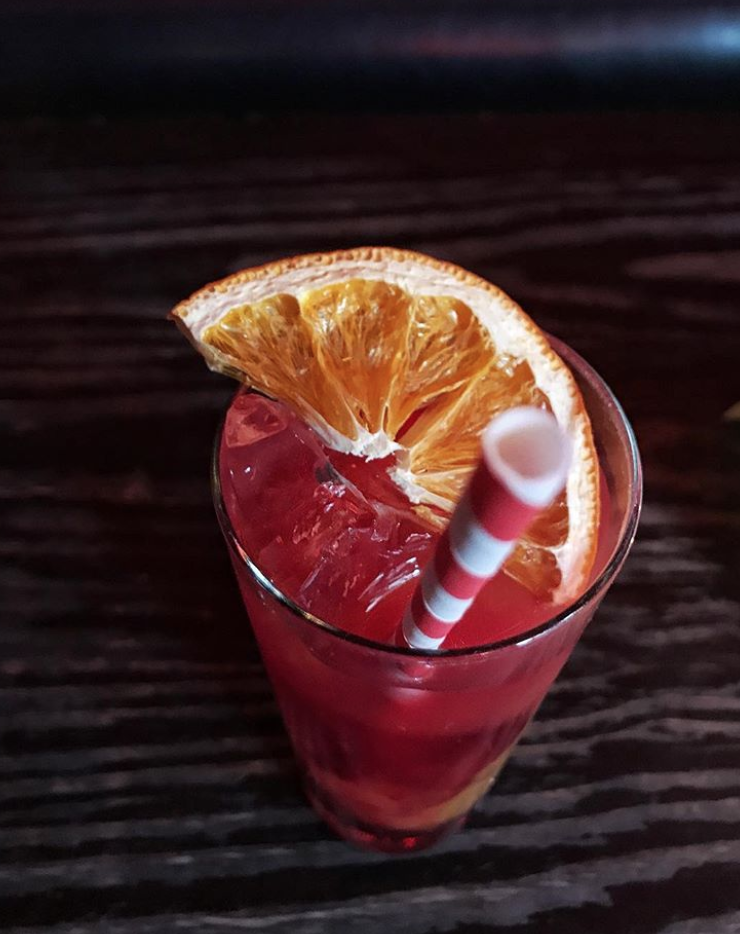 The process of making a chili, stew, or spaghetti sauce from scratch results in a lot of remnants of peppers and tomatoes. Next time, turn them into a shrub—a.k.a. a vinegar syrup or drinking vinegar. This one can work in place of the lime or citrus juice in a margarita, daiquiri, or cosmopolitan recipe. Sealed in an airtight jar in the fridge, this shrub will stay fresh and vibrant for up to six months.
The process of making a chili, stew, or spaghetti sauce from scratch results in a lot of remnants of peppers and tomatoes. Next time, turn them into a shrub—a.k.a. a vinegar syrup or drinking vinegar. This one can work in place of the lime or citrus juice in a margarita, daiquiri, or cosmopolitan recipe. Sealed in an airtight jar in the fridge, this shrub will stay fresh and vibrant for up to six months.
3/4 lbs. tomato trimmings
1/4 lb. bell pepper trimmings, cut small
1 lb. organic white sugar
1 tsp. kosher salt
4 cups apple cider vinegar
METHOD FOR THE SHRUB:
Mix all ingredients except the apple cider vinegar in a nonreactive container. Macerate until they are well smashed together. Place in a fridge for 24 hours. Take out and macerate once more. Let sit for another 24 hours. Strain through fine-mesh chinois and remove tomato and pepper solids, keeping just the sugar, salt, and liquid base. Place this in a new airtight container, and pour in the apple cider vinegar. Shake well and store until you need it for a drink.
The Radicchio Gin & Tonic
Courtesy of Seamstress in New York City
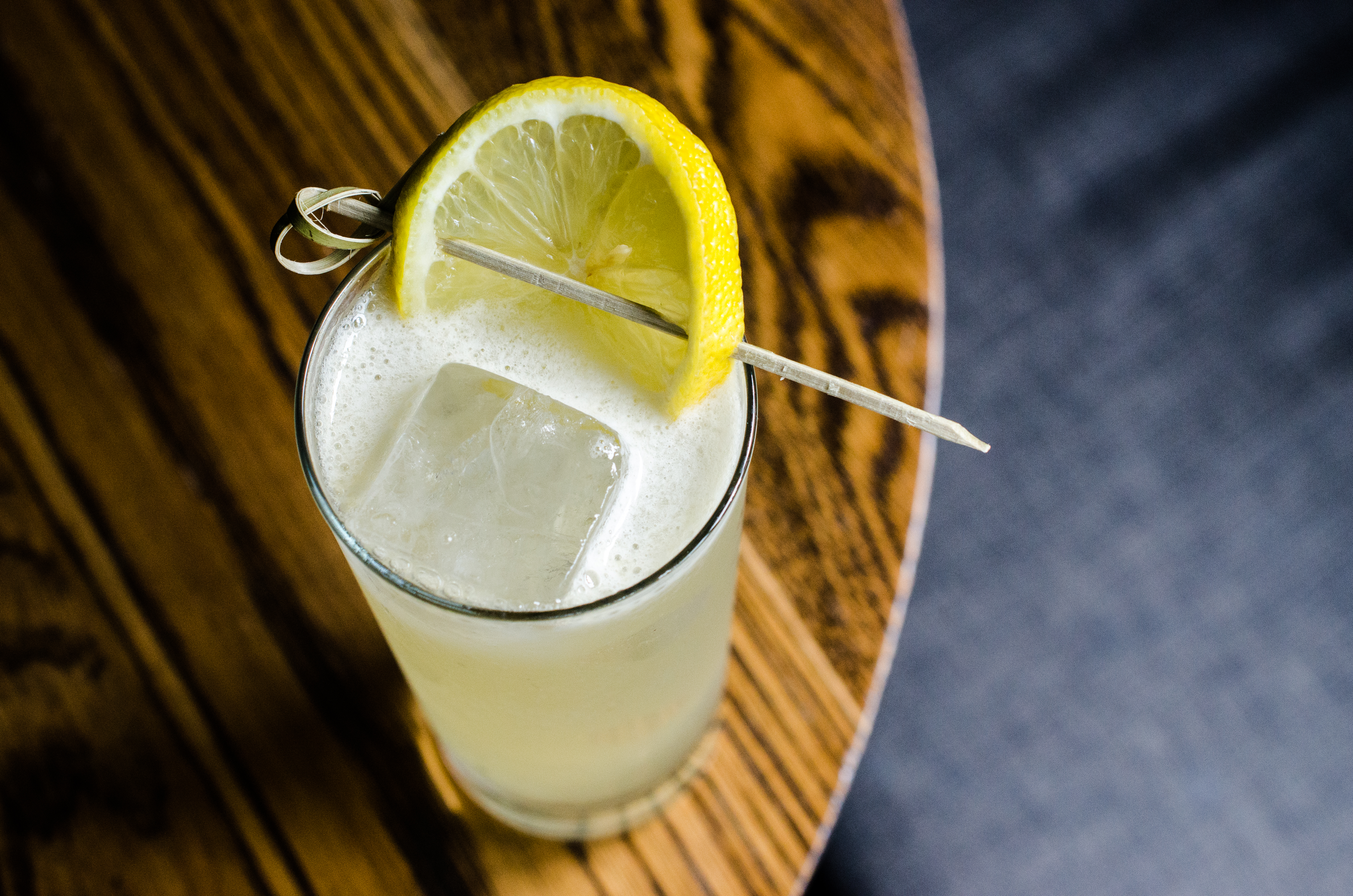 Yes, lettuce can indeed enhance a cocktail. When it comes to vegetal infusions, gin works well, so get playful and try making use of nearing-its-end or leftover celery by putting it in a bottle. You can do the same with cucumbers, beets, or even endive. We love the second life that this drink offers for leftover radicchio.
Yes, lettuce can indeed enhance a cocktail. When it comes to vegetal infusions, gin works well, so get playful and try making use of nearing-its-end or leftover celery by putting it in a bottle. You can do the same with cucumbers, beets, or even endive. We love the second life that this drink offers for leftover radicchio.
1.5 oz. radicchio-infused gin**
1 tsp. of honey
5 fresh basil leaves
tonic water
**Place half a head of radicchio into one 750ml bottle of gin and let infuse for 24 hours. Strain out gin.
METHOD:
In a shaker, muddle fresh basil and honey. Add infused gin and ice. Shake. Strain into a tall collins glass over fresh ice. Top with tonic water and a lemon slice.
The Daiquiri Frappé
Courtesy of Shelby Allison, co-owner of Lost Lake, Chicago
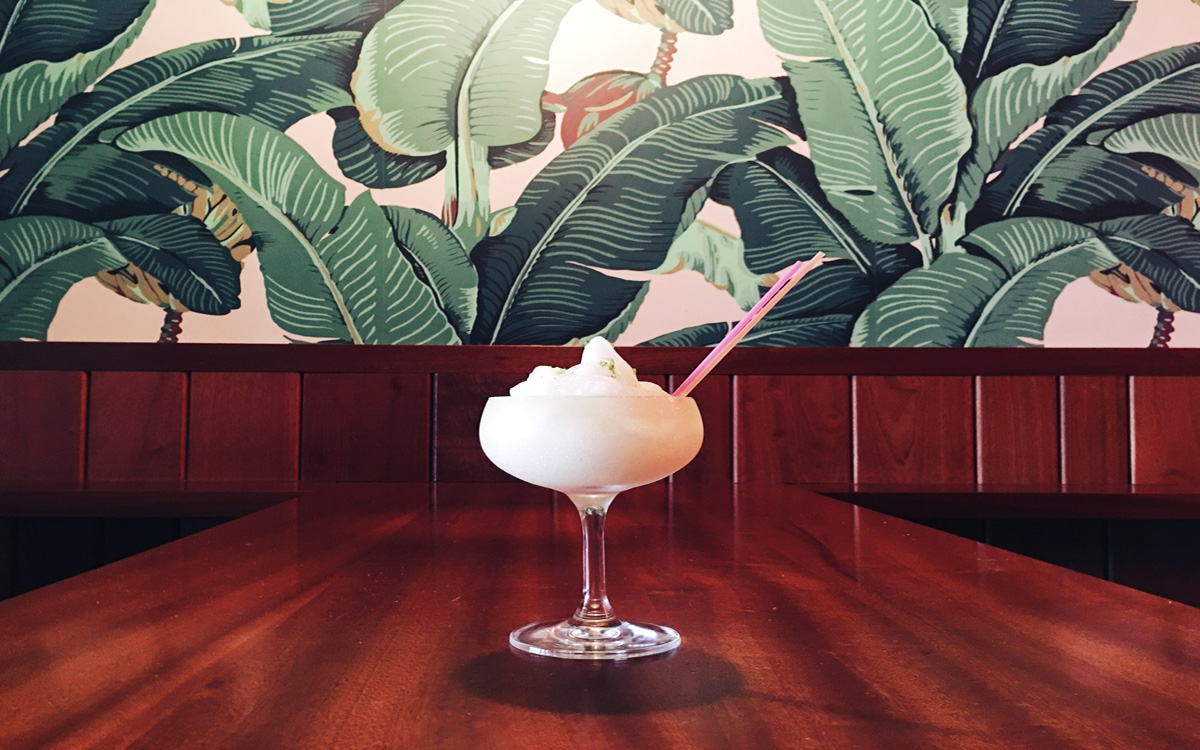 Lost Lake’s foray into the zero-waste movement stems from a pop-up party with another bar, at which Allison says staff discovered that using limes that had already been squeezed once (a.k.a. lime husks) could offer second-life flavor in the form of ice.
Lost Lake’s foray into the zero-waste movement stems from a pop-up party with another bar, at which Allison says staff discovered that using limes that had already been squeezed once (a.k.a. lime husks) could offer second-life flavor in the form of ice.
2 oz. Cuban-style rum
1 oz. fresh lime juice
1 tbsp. sugar mix (equal parts white sugar and raw sugar)
1/2 oz. coconut cream (organic, canned)
4 lime ice cubes**
**Soak juiced lime husks—4 whole limes (8 pieces)—in 1 quart of cold water for 24 hours. Then, remove the husks. Freeze contents in an ice cube tray, and use cubes in your next drink. If done right, you could always bring the flavors of one party into the next. (In which case, you’re totally zero-waste partying.)
METHOD:
Combine rum, sugar, fresh lime juice, coconut cream, and your lime ice cubes in a blender. Blend for 30 seconds. Serve in your favorite glass with a straw.
Browned Butter Old Fashioned
Courtesy of Christina Cabrera of Gertie’s Bar at the 404 Kitchen in Nashville, Tennessee
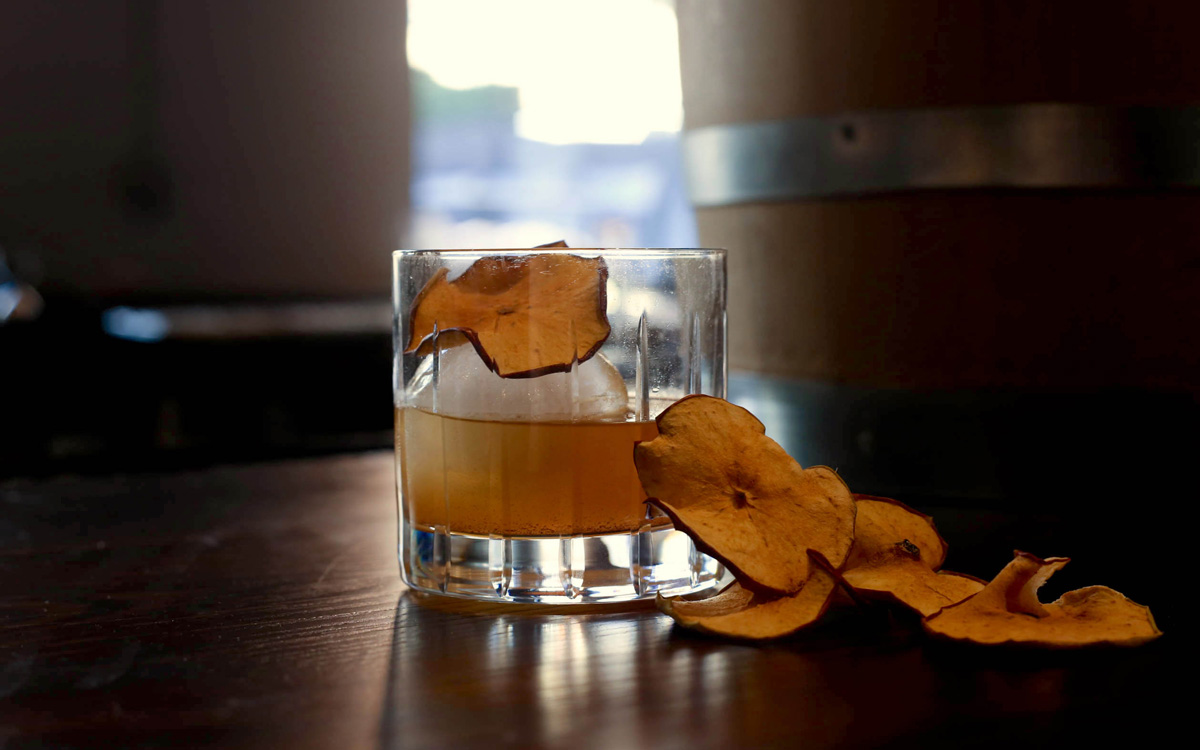 “The delicious fat [in this drink] seeps into the bourbon, and the butter rises to the top,” says Cabrera. This classic recipe is divine for chilly nights by the fire. Plus, the booze-infused butter you strain off the bourbon after creating the infusion has several more lives to live—on top of your biscuits, mixed into coleslaw, or even atop cinnamon toast.
“The delicious fat [in this drink] seeps into the bourbon, and the butter rises to the top,” says Cabrera. This classic recipe is divine for chilly nights by the fire. Plus, the booze-infused butter you strain off the bourbon after creating the infusion has several more lives to live—on top of your biscuits, mixed into coleslaw, or even atop cinnamon toast.
2 oz. brown butter bourbon**
3 dashes Angostura bitters
1 sugar cube
Club soda
**To make brown butter bourbon, add 1 pound of butter to a stock pot. Cook it down on a very low simmer and keep whisking until it turns a golden brown and develops a nutty flavor and scent. Let the butter cool a little. Pour a 1-liter bottle of your favorite everyday bourbon into a nonreactive container. Add the butter to the bourbon, cover, and freeze overnight.
METHOD:
Place the sugar cube (or 1/2 tsp. sugar) in an old-fashioned glass. Wet it down with two or three dashes of Angostura bitters and a short splash of club soda. Crush the sugar with a wooden muddler or strong spoon. Rotate the glass so that the sugar grains and bitters line the bottom and low sides. Add a large ice cube. Pour in the whiskey. Stir gently, and garnish with an orange slice.
 The Magazine of The Sierra Club
The Magazine of The Sierra Club



